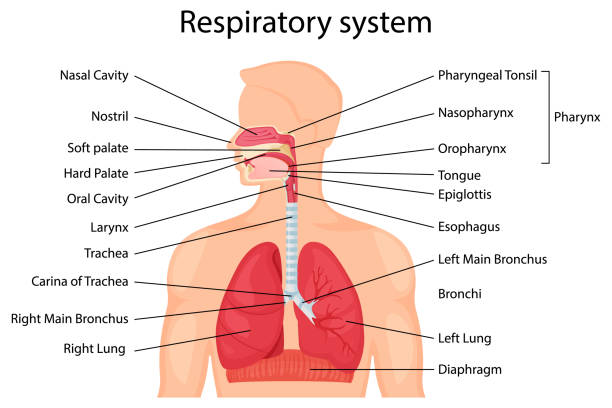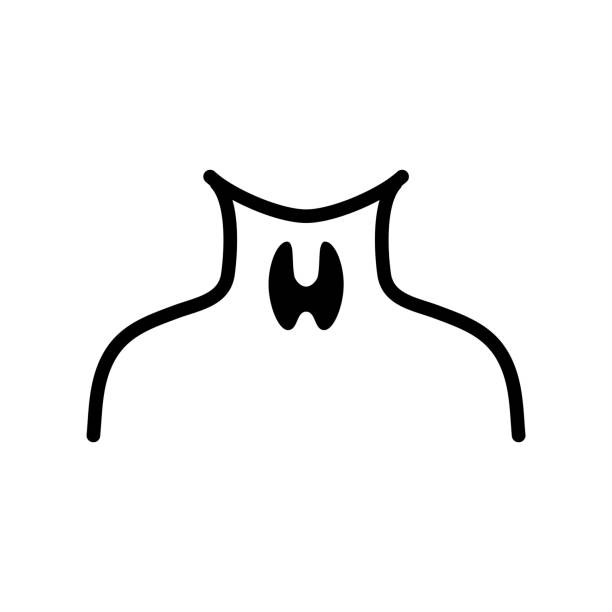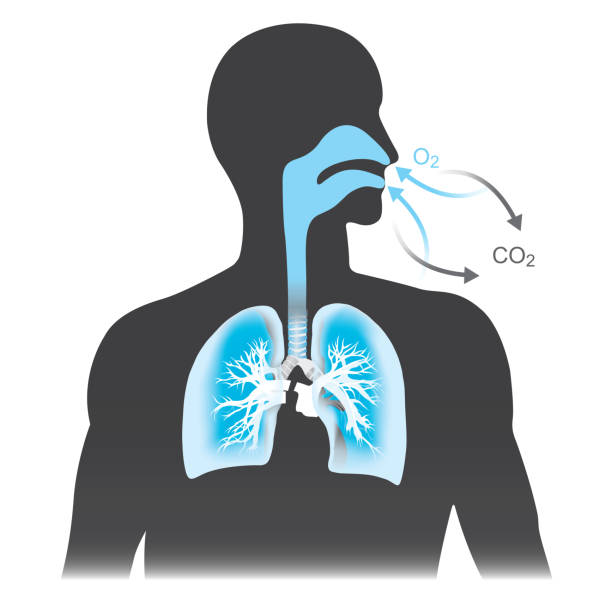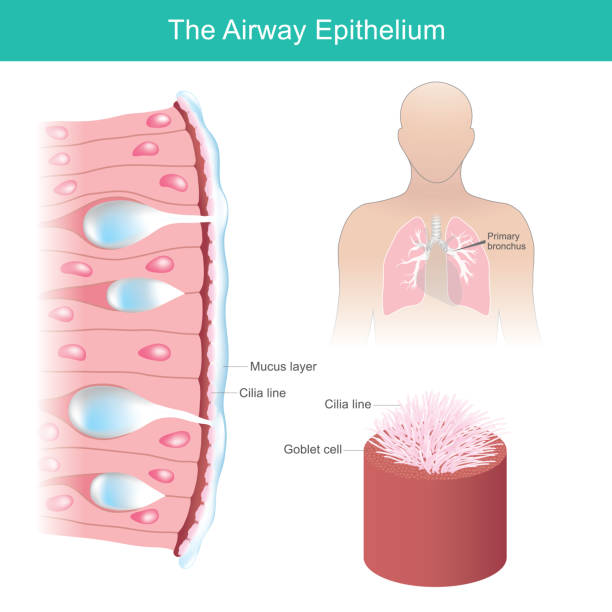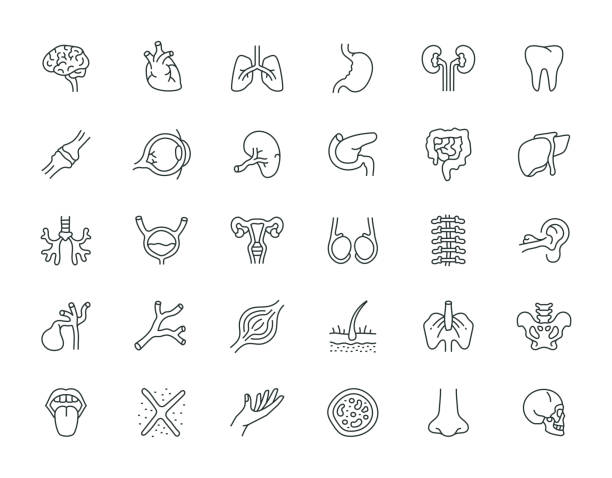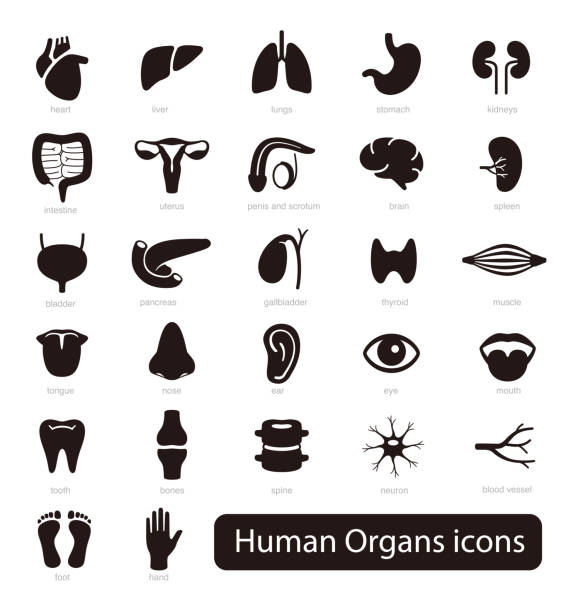
Trachea stock illustrations
Browse 7,000+ trachea stock illustrations and vector graphics available royalty-free, or search for trachea anatomy or human trachea to find more great stock images and vector art.

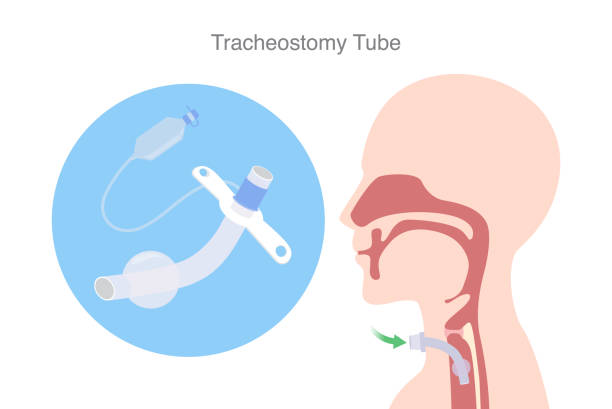
Tracheostomy tube is a device to help a patient who can not breathe with nose and mouth. Illustration about Tracheostomy is surgical to inserted a siliconized tube into the trachea to help breath.
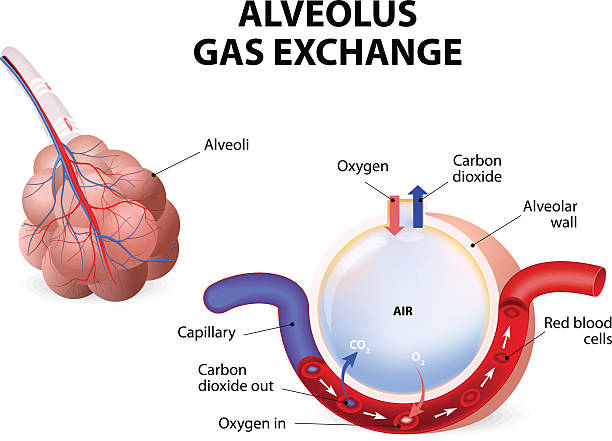
Alveolus. gas exchange. Pulmonary alveolus. alveoli and capillaries in the lungs.
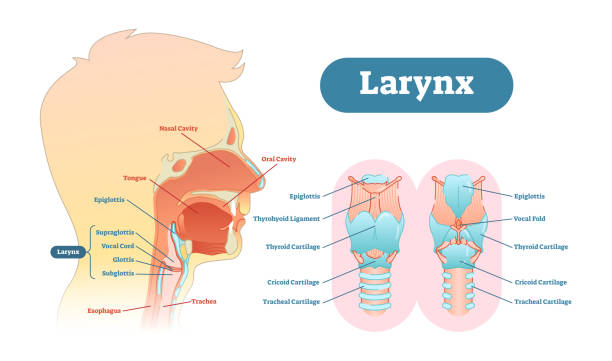
Larynx anatomical vector illustration diagram, educational medical scheme with nasal cavity, larynx, trachea and esophagus.
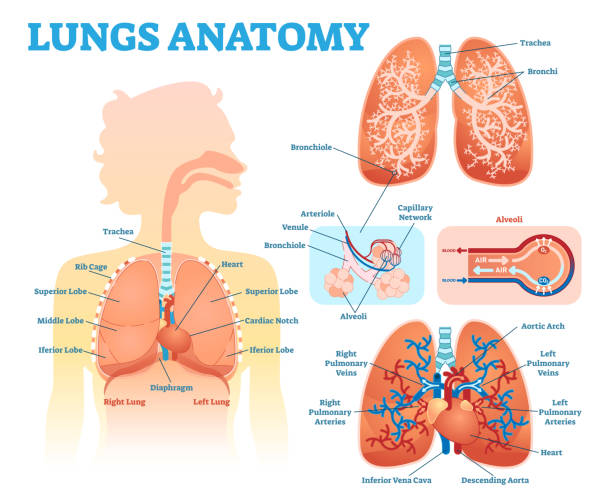
Lungs anatomy medical vector illustration diagram set with lung lobes, bronchi and alveoli.
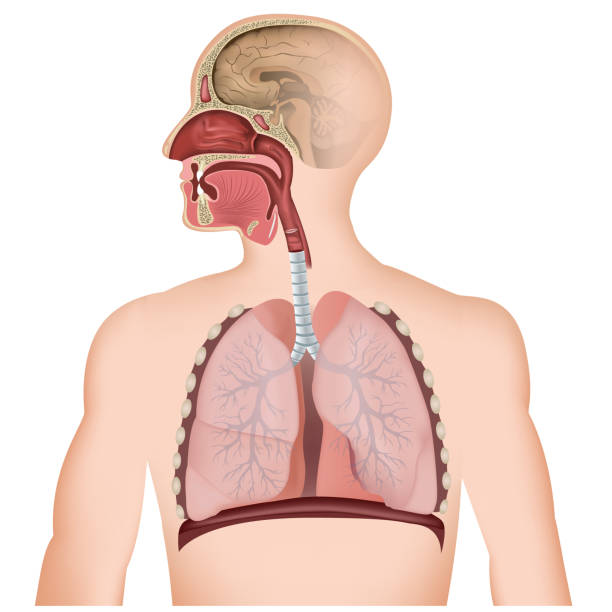
The respiratory tract medical vector illustration on white background eps 10
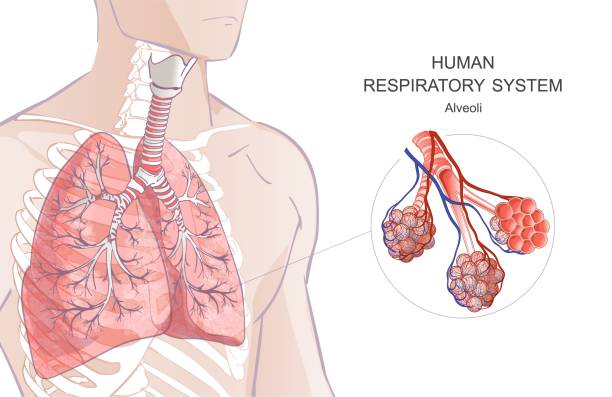
human Respiratory System, lungs, alveoli. Inside larynx nasal throttle anatomy. Man body parts. Hand drown vector anatomy illustration
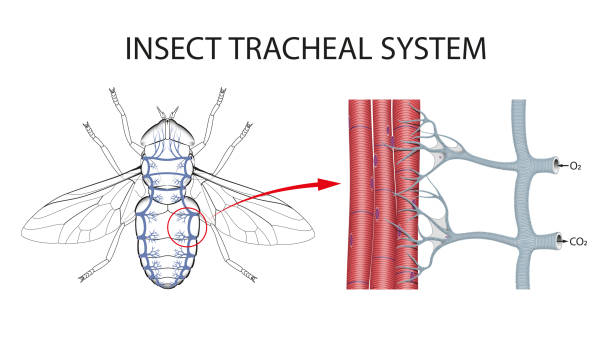
For insects, respiration is separate from the circulatory system. Oxygen and carbon dioxide gases are exchanged through a network of tubes called tracheae. Instead of nostrils, insects breathe through openings in the thorax and abdomen called spiracles

Tracheostomy. Surgical airway management procedure. Anatomy of the trachea with stoma. larynx. human silhouette with lungs, trachea, bronchi. correct placement of a tracheostomy tube in the windpipe. vector illustration

Silhouette human lungs. Modern, stylized logo design of human lungs. Icon for your holistic health and fitness business, lung center, pediatric clinics, health system and health care concept. Vector illustration.

Anatomy of the larynx 3d medical vector illustration on white background eps 10
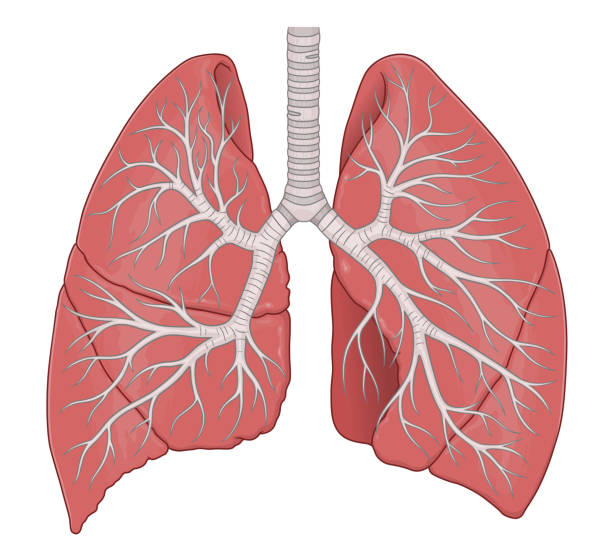
Human lungs and bronchus anatomy medical vector illustration.

The esophagus or oesophagus is an organ in vertebrates through which food passes, aided by peristaltic contractions, from the pharynx to the stomach. The esophagus is a fibromuscular tube, that travels behind the trachea and heart. During swallowing, the epiglottis tilts backwards to prevent food from going down the larynx and lungs. The trachea is the long tube that connects your larynx to your bronchi. Bronchi send air to your lungs. Trachea is a key part of respiratory system. The trachea is made of rings of cartilage. It is lined with cells that produce mucus.
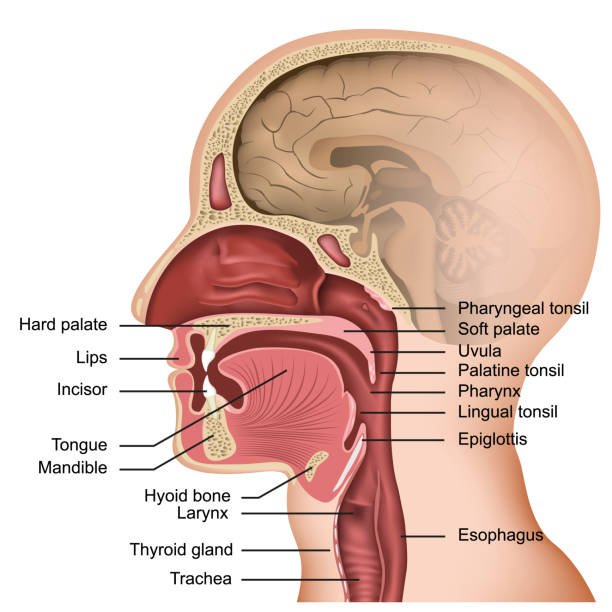
Anatomy of the mouth and tongue medical vector illustration on white background eps 10

Vector illustration about dysphagia. Human compered in scheme. Closeup head with nasal cavity, mouth, tongue, trachea to lungs and esophagus to stomach. Explained how epiglottis blocks the larynx.
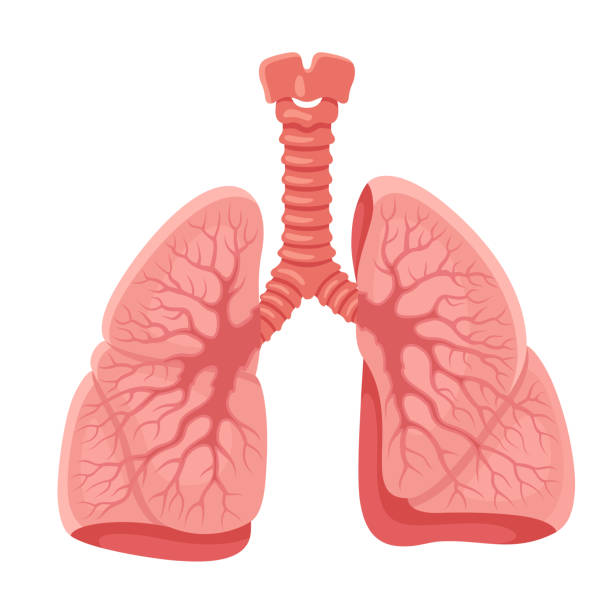
Human anatomy. Lungs, internal organ.

The lungs are the primary organs of respiration in humans and many other animals including a few fish and some snails. In mammals and most other vertebrates, two lungs are located near the backbone on either side of the heart. Vector graphic.
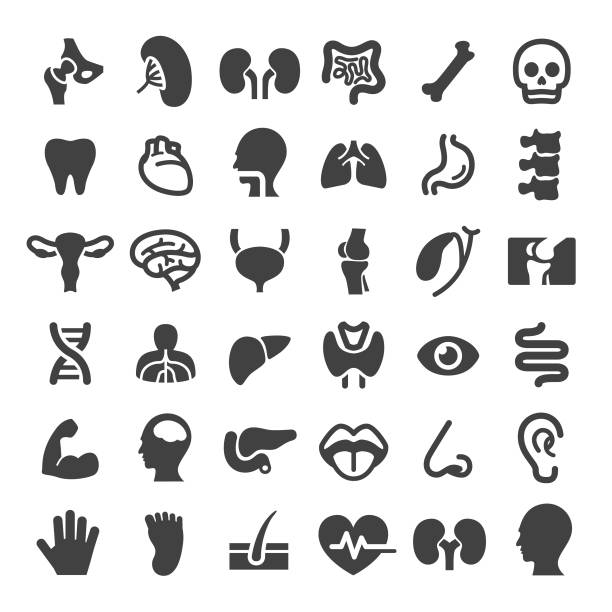
Human Organ, human internal organ, healthcare and medicine,
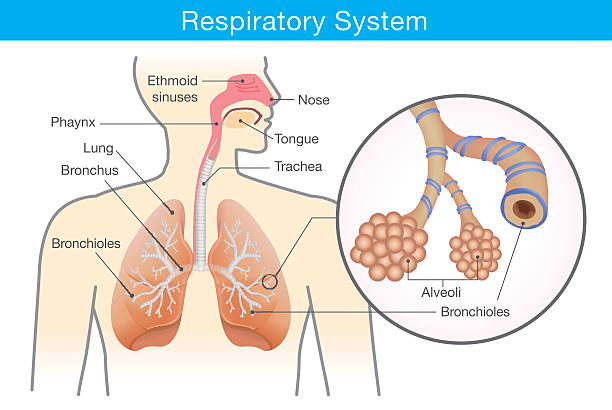
Respiratory system of human. This illustration about anatomy and physiology.

Respiratory system examination and treatment. Pulmonology. Lungs healthcare. Flat vector illustration.
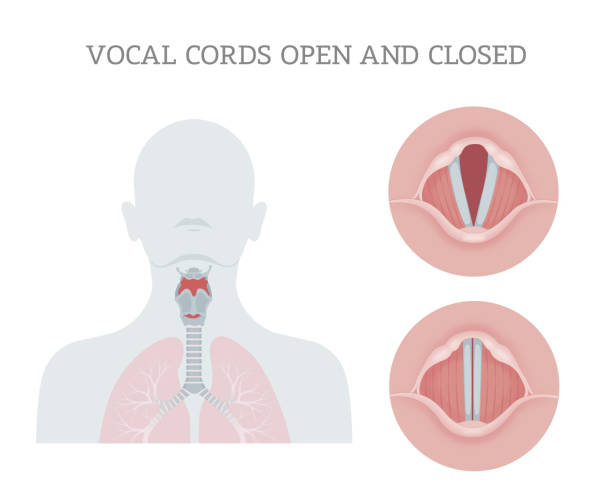
Vocal cords are folds of throat tissues that are key in creating sounds through vocalization. The size of vocal cords affects the pitch of voice. They are composed of twin infoldings of mucous membrane stretched horizontally, from back to front, across the larynx. They vibrate, modulating the flow of air being expelled from the lungs during phonation
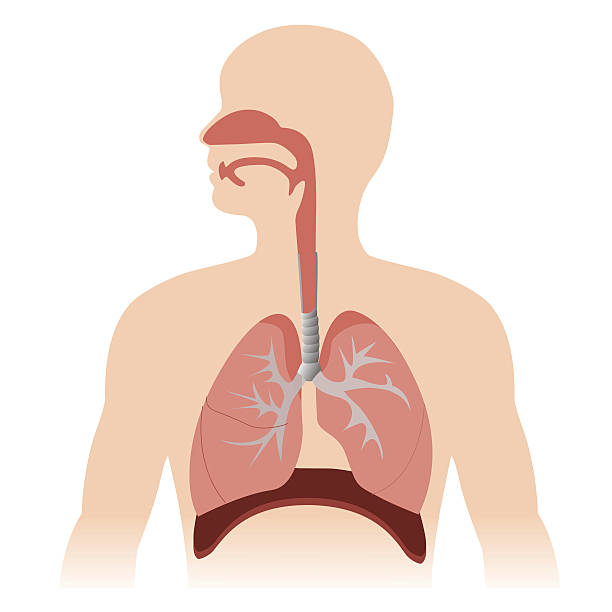
human respiratory system anatomy. vector format illustration.
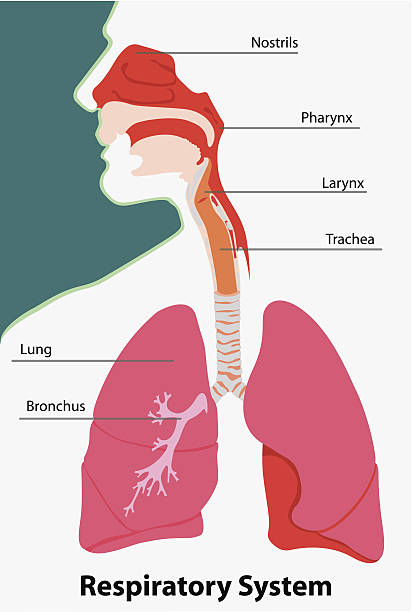
Illustration representing Anatomy of respiratory system terrestrial vertebrates

Tracheotomy medical vector illustration on white background eps 10
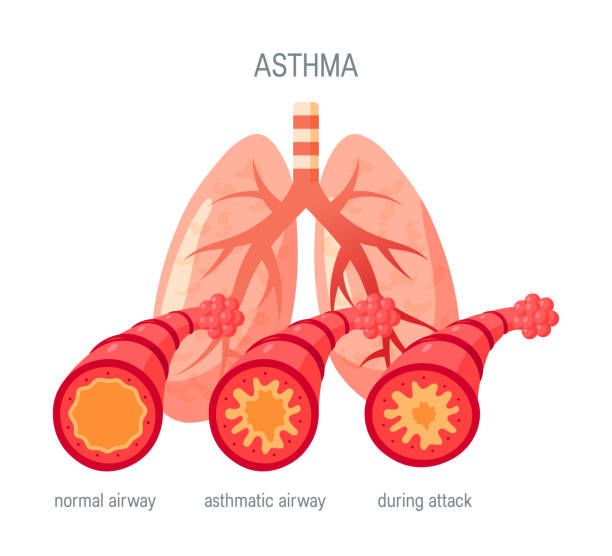
Asthma disease concept. Vector illustration in flat style for medical atlases, articles, infographics etc.
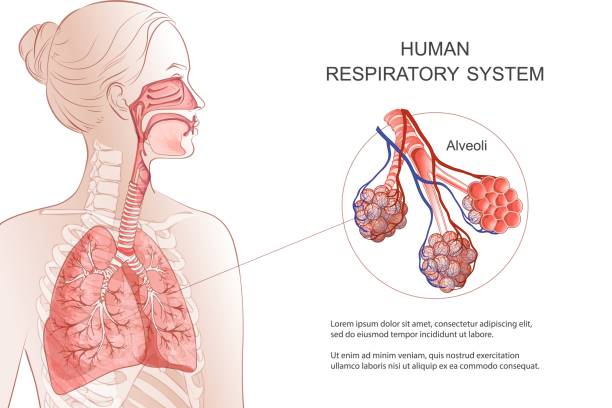
Human Respiratory System, lungs, alveoli. Medical diagram. Inside larynx nasal throttle anatomy. Breath, pneumonia, smoke. Vector Anatomy illustration. Healthcare and medicine infographic

Cycle of breathing, inspiration and expiration. Role of Diaphragm and intercostal muscles (ribs and chest) in Gas exchange in lungs. respiratory system anatomy. vector illustration

An insect's respiratory system is the system with which it introduces respiratory gases to its interior and performs gas exchange
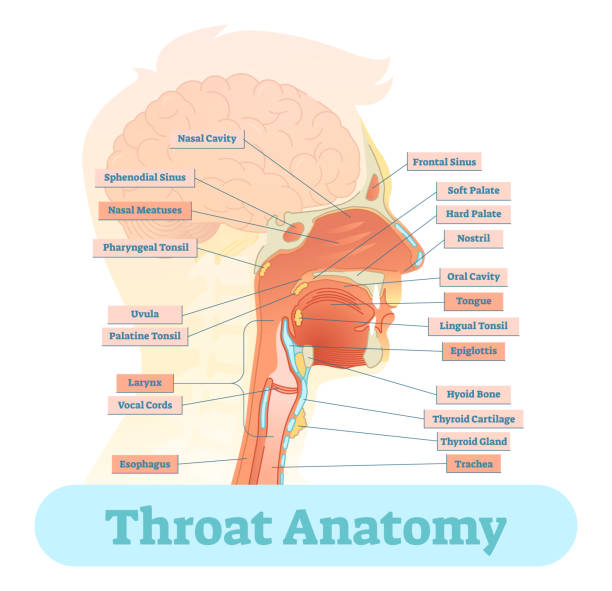
Throat anatomy vector illustration diagram, educational medical scheme.

Anatomy of the thyroid gland medical 3d vector illustration eps 10
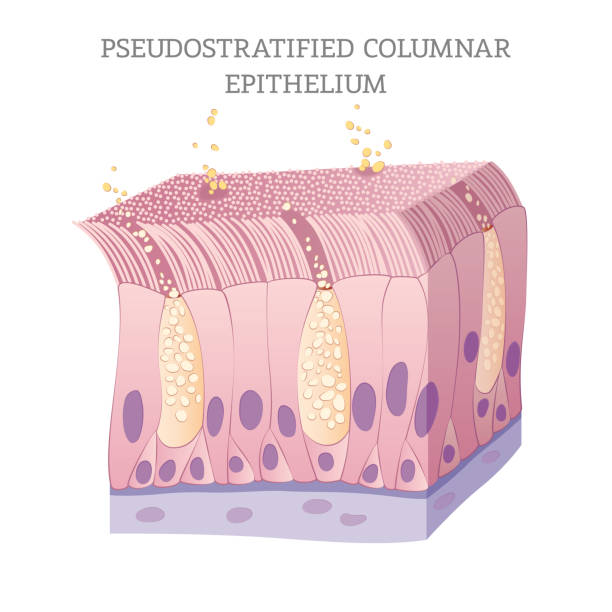
Ciliated columnar epithelial cells are found mainly in the tracheal and bronchial regions of the pulmonary system and also in the fallopian tubes of the female reproductive system.

Illustration of a Trachea

Esophagus is a muscular tube-like organ

3D Isometric Flat Vector Conceptual Illustration of Asthma Symptoms And Causes, Respiratory Disease Triggers
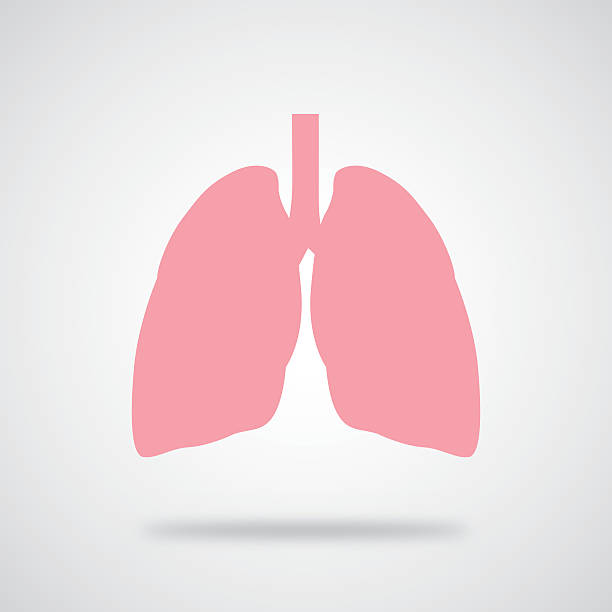
Vector illustration of pink lungs with shadow on a gray gradient background.

Human lungs. Medical educational chart. Vector illustration isolated on white background

Human Internal Organs Icons Set. Flat gradient style. Vector illustration.

Unhealthy young woman suffer from thyroid problems. Unhappy sick female struggle with hyperthyroidism. Larynx body organ trouble. Healthcare. Vector illustration.
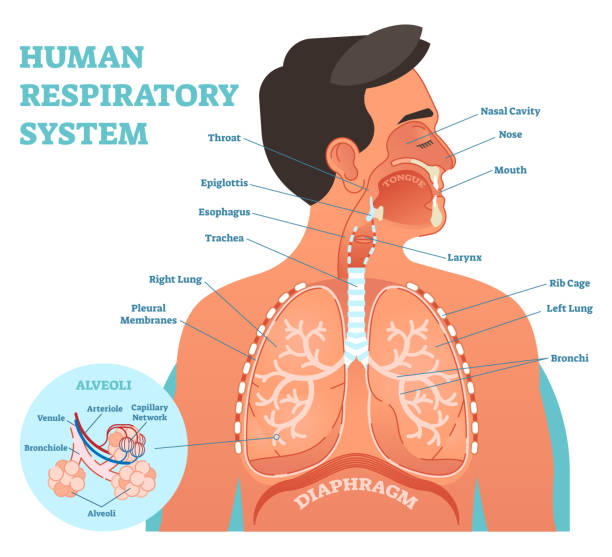
Human Respiratory System anatomical vector illustration, medical education cross section diagram with nasal cavity, throat, esophagus, trachea, lungs and alveoli.
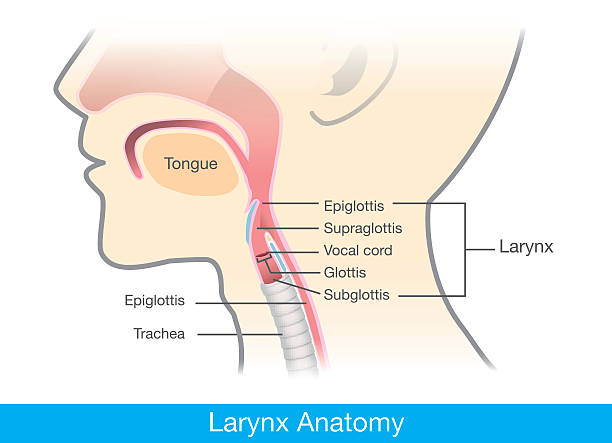
Human larynx anatomy. This illustration is medical diagram.

Tracheal - endotracheal - intubation - tube with inflatable cuff and Tracheal tube without cuff. Use in emergency room. Used for artificial lung ventilation in the treatment of coronavirus

Tracheal collapse icon, sign. Medical pictogram. Trachea disorder. Respiratory distress. Editable vector illustration in a thin line style isolated on a white background.

Lungs with glowing effect. Realistic transparent blue Lungs on dark background. Human respiratory system. Illustration for healthcare design. Vector diagram

The respiratory segment comprises most of each nasal cavity, and is lined with ciliated pseudostratified columnar epithelium (also called respiratory epithelium).

The structure of the nasopharynx in section on a white background

Bronchoscopy - lungs diagnotic concept. Vector illustration in flat style. Template for web banners, advertising, posters, infographics etc.

Human anatomy scientific illustrations with latin/italian labels: head section

Stages of airways narrowing during asthma attack with possible formation of mucus plug. Smooth muscle layer goes into spasm, middle layer swells, excessive mucus is produced.

easy to edit vector illustration of Respiratory System
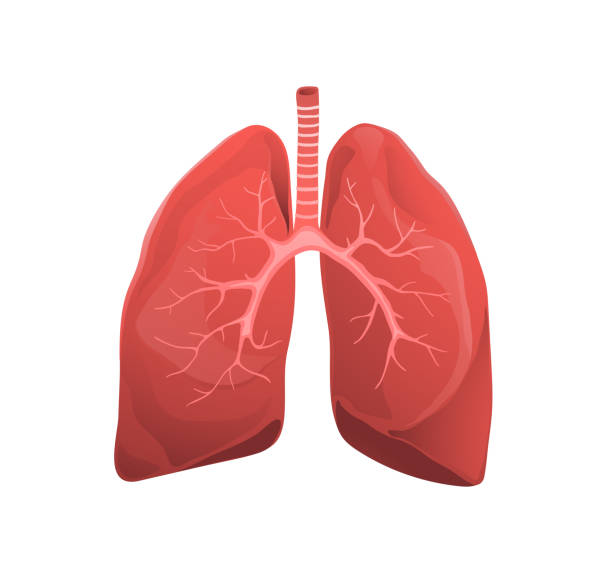
Internal organs anatomical model. Bronchi realistic illustration. Respiratory system function isolated clipart. Medicine and healthcare drawing. Anatomy and biology education. Medical studies

